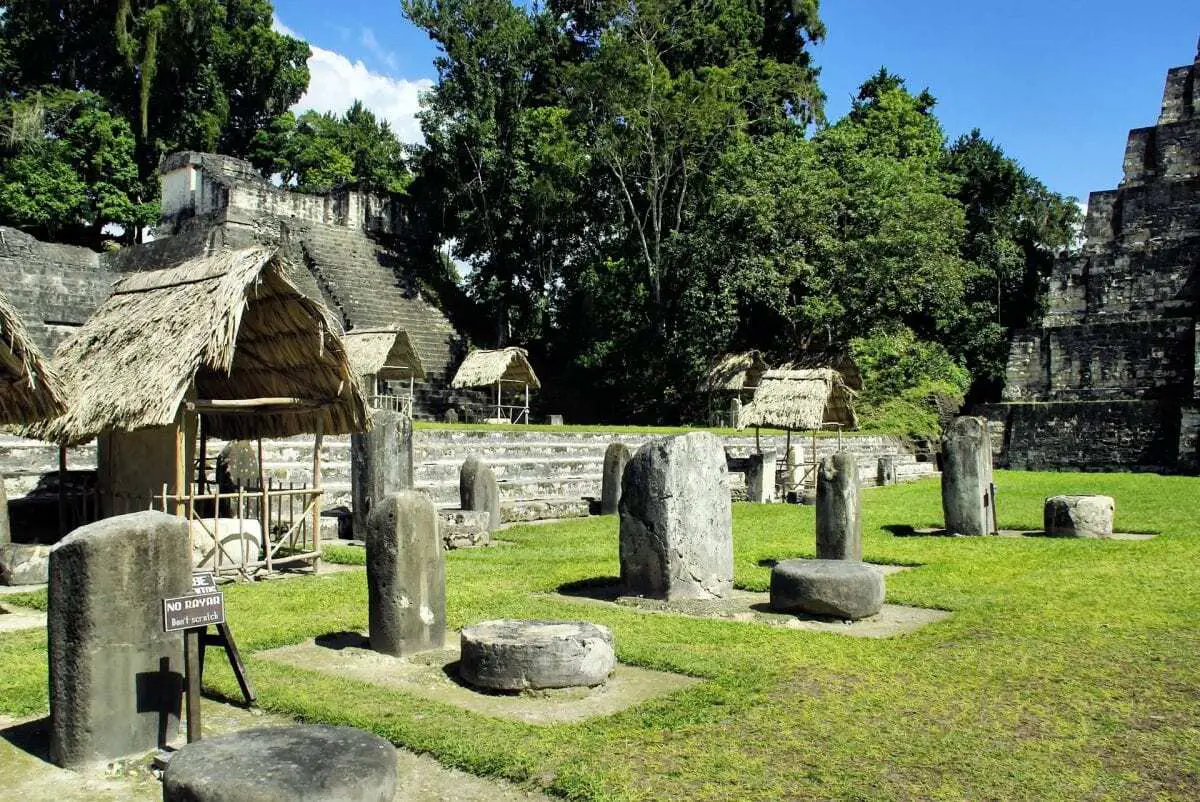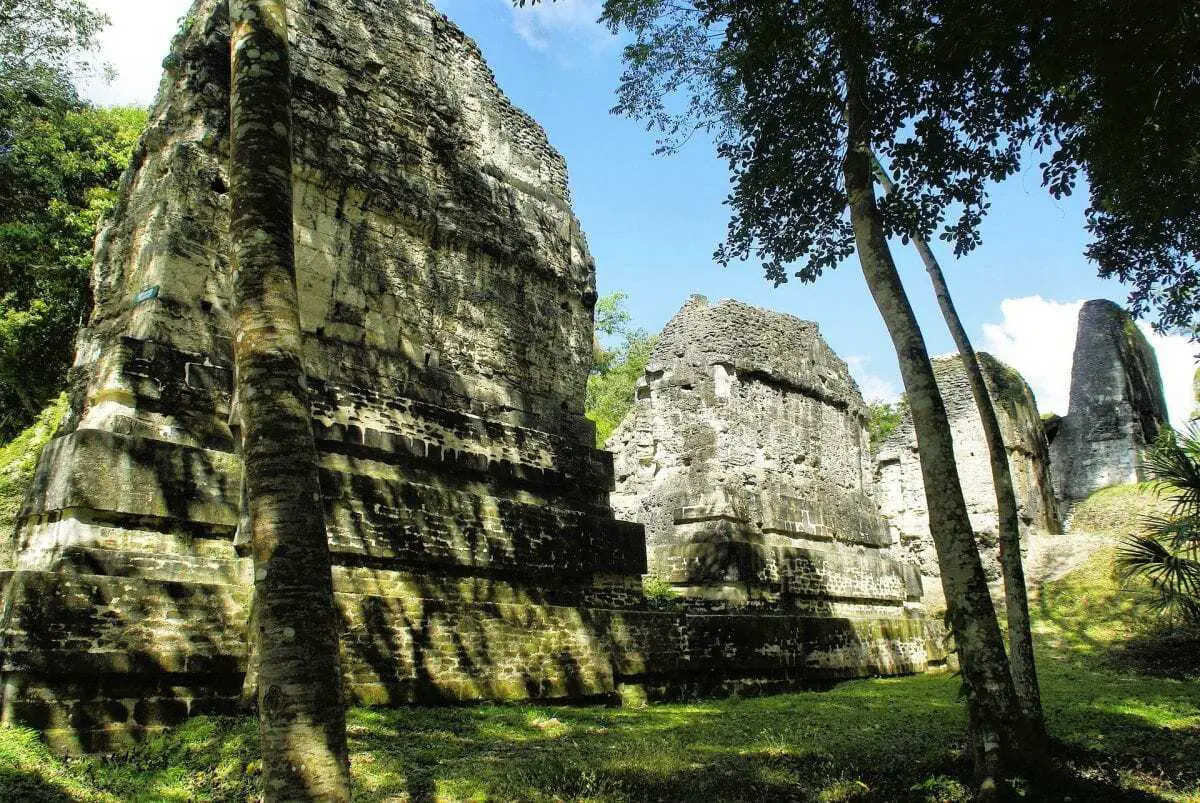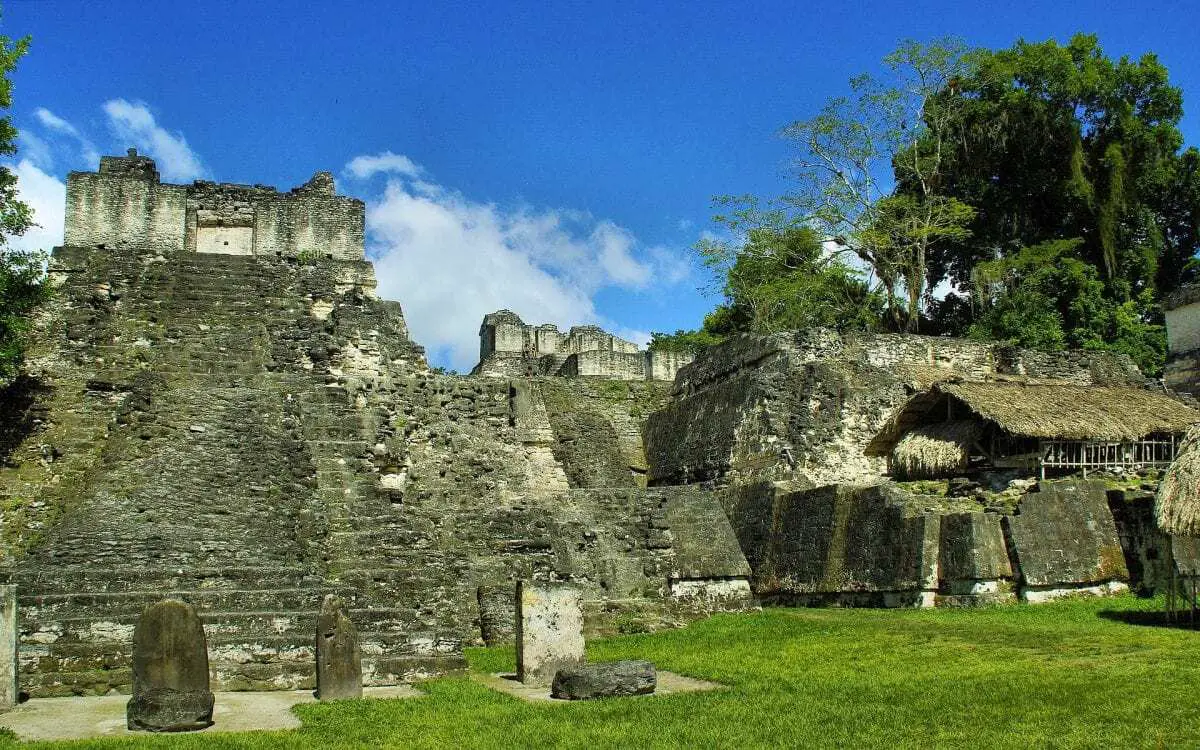Beneath the tropical rainforests of Guatemala lies what remains of ‘one of the foremost archaeological sites in the world’ (Sharer & Traxer, 1946). Its modern name is Tikal, but when it was one of the most powerful kingdoms of the ancient Maya, it was known as Yax Mutul meaning “First Mutal”.
This ancient site holds within it archaeological evidence acting as the foundation of the knowledge that has been recorded on the Mayans dating back more than 1200 years. One of the most fascinating Mayan Ruins, through the analysis of ancient artefacts found in Tikal, modern-day archaeologists can determine the lifestyle of the Mayan civilisation.
One of the characteristics that differentiate Tikal from other historically recognised sites is the phenomenal architecture that was built by the Mayans. These temples, some of which rise 70 meters above the ground, illustrate a division of the classes in the Mayan civilisation, establishing a social hierarchy among its people (Sharer & Traxler, 1946).
In particular, there is a high degree of variation in residential architecture within Tikal. Housing shows both small poll and thatch buildings and larger complex or masonry structures such as the royal households (Becker, 1973).

It can be suggested that those who inhabited grand edifices were that of higher social status then persons who lived in smaller housing made of perishable materials (Smith & Masson, 2000). Buildings that are also thought to be the houses of elite royals tend to have a higher complexity, including a greater effort to protect the occupants’ privacy (Smith & Masson, 2000).
Furthermore, at the heart of Tikal the Central Acropolis stands. It can be inferred that this building houses the ruling family. This distribution of complexity in the residential architecture of Tikal is evidence for division within the classes in the ancient Maya.
Variation in residential architecture is not the only basis for evidence of social hierarchy, as there is also an immense disparity in the burials of the Mayan people. Heads of elite households were usually placed in tombs underneath the temples (Smith & Masson, 2000). The most extraordinary tombs were the remains found in North Acropolis of Tikal. It can be inferred that these tombs were that of the men that may have been housed in the Central Acropolis at the time of the Maya.
This is because their burials reflect that of high status and importance. For example, the tombs of the North Acropolis were both expensively stocked and built; comprising of precious goods such as beads of jade, stingray spines and red pigments covering the body.
On the basis of glyphic texts, two of these tombs have been identified as rulers ‘Animal Skull’ and ‘Ah Cacao’ (Smith & Masson, 2000). Conversely, burials that have been thought to be of the lower class community of Tikal are of similar nature to one another. This is because they all comprise of pottery vessels as well, they are usually of higher quality and abundance (Culbert, 1993). This degree of disparity in the Tikal burials provides evidence towards large contrasts in status among the community.

Further evidence of the lifestyle of the Maya can be given through skeletal evidence found in the Tikal burials. Investigations of the remains found in Tikal show a distinctive pattern of skewed skulls among the people residing in the Central Acropolis (Smith & Masson, 2000).
Deliberate alteration of normal head shape was adopted first by women of nobility before it became a common practice among citizens of their sex. Similarly, the noble males adopted an analogous practice with distorting head shape, before it was uncovered from citizens of the lower class burials (Smith & Masson, 2000).
The disfiguring shape of the skull within Tikal is practised in order to maintain an identity with each of the Mayan empires. It may also have been used as a cultural ritual that was aimed at creating a skull shape which is aesthetically more pleasing or associated with desirable attributes such as intelligence. Once this trait was adopted by the aristocrats, people of Tikal followed. This illustrates that commoners highly valued the practice and works of the social elite.
Analysis of the material identify class differences in diet which assists archaeologists in evaluating the diverse life experiences people endure as a result of unequal access to resources (Golden & Borgstede, 2004). As expected the aristocrats in Tikal indicate a more favourable nutrient intake in comparison to other citizens of the community. Because of their favoured circumstances, including a higher protein diet people of royal status were best able to reach their full potential. It was also concluded that skeletons uncovered from royal burials were older, indicating a greater life expectancy of the aristocrats exceeding up to sixty years of age. Conversely, the mean age of the lower class citizens were approximately forty years old (Smith & Masson, 2000).
The distinctive divergence in the diet becomes more extreme by the ends of the classic period, where malnutrition and disease in lower-class citizens of Tikal is amplified (Wright & White, 1996).
The complexity of the Mayan empire is evident through the vast excavations held at Tikal, uncovering various artefacts which shape our understandings of the people that once lived there. It was through the remains of this once great city that archaeologists can gain the knowledge of the complex social hierarchical systems, traded goods and malnutrition within the population.
Written by Ashleigh Murszewski
Bibliography:
Becker M.J., 1973, Archaeological Evidence for Occupational Specialisation among the Classic Period of the Maya at Tikal, Guatemala, American Antiquity, Vol. 38, No. 4, pp. 306-406.
Culbert T.P., 1993, The Ceramics of Tikal:Vessels from the burials, caches and problematic deposits, University of Pennsylvania, USA.
Golden C.W. & Borgstede G., 2004, Continuities and changes in Maya archaeology: perspectives at the millennium, Routledge, New York.
Sharer R.J & Traxler L.P, 1946, The Ancient Maya, Stanford, California.
Smith M.E. & Masson M.A., 2000, The Ancient Civilisations of Mesoamerica, Blackwell Publishers Ltd, USA.
Wright L.E. & White C.D., 1996, Human biology in the Classic Maya collapse: Evidence from paleoanthropology and paleodiet, Journal of World
Header Image – Public Domain





